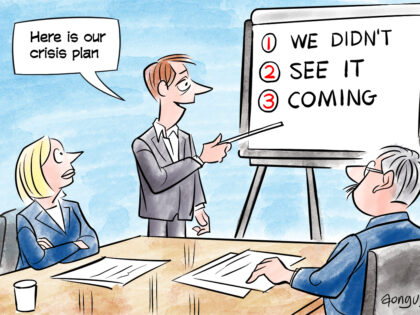
Do crisis simulations work?
There is nothing like the real thing. Unfortunately, you may only get one shot at the ‘real thing’ and it can make or break you.
A good simulation should:
- Be a wake-up call to everyone that plain sailing cannot be guaranteed forever.
- Be realistic enough and not delve into the realms of fantasy. I had a consultancy that ran a scenario of a biological bomb falling in a reservoir. The Chief Scientist took out her notepad and after scribbling a few numbers said: “at that concentration, it will be harmless”. Game over.
- Get buy-in from the C-suite, particularly the CEO, as to ‘who will do what’. Even if the C-suite do not take part, roles should be allocated.
- Give proper take-aways for future actions. For example, we will write holding statements for the five most likely crises that may hit us.
- Have a follow-up to see what has been learnt and has it been implemented.
- Produce a simple, checklist crisis plan, like airplane pilots have, so that all players know their roles.
These are just some of the elements.
So, how realistic should an exercise be?
Teams or Zoom are great for remote interviews by media, but in a major crisis, you can expect live media. There is nothing as realistic as having a microphone thrust in your face or an activist breaking into a room to get realism.
For me, desk-top exercises are often used as a cover to tick a box: ‘Yes we have had a crisis simulation’. A crisis does not happen on a desk.
Record as much as possible on video and play it back. As well as being entertaining, it’s where the real learning is.
My company has been running these exercises for multinationals and major business schools for many years. See more at www.crisis-comms.com.
Have a good week.
Tom


